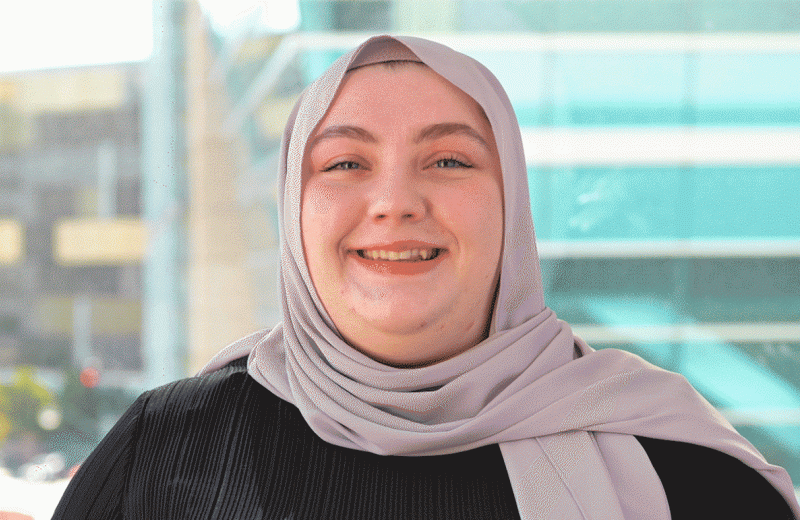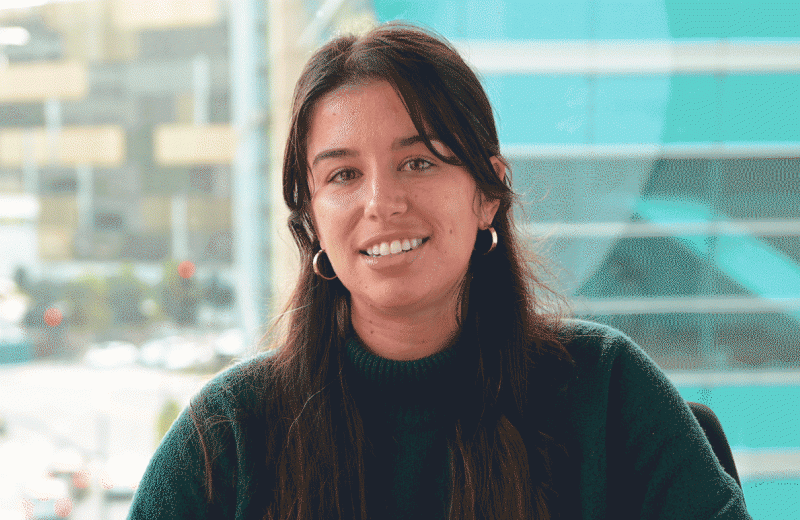
Irfan Kathiriya, MD, PhD, is a visiting scientist in the laboratory of Benoit Bruneau. He joined Gladstone after earning his MD and PhD from the University of Texas Southwestern Medical Center and completing his clinical training at the University of California, San Francisco.
What brought you to Gladstone?
After earning an MD and PhD at the University of Texas Southwestern Medical Center with Deepak Srivastava (before he moved to Gladstone), I completed 6 years of clinical training at UCSF. Then, I joined Benoit Bruneau’s lab at Gladstone to study how genes control the process of heart development and how abnormalities in these genes cause congenital heart diseases.
What do you like about Gladstone?
Gladstone has a tremendously innovative scientific environment. But it also cultivates a strong sense of community with student outreach and non-science events. For example, I enjoy bringing my daughter to Gladstone for Halloween festivities and Take Your Daughters and Sons to Work Day. I am proud of Gladstone’s efforts to promote science to students of all ages and backgrounds, including under-represented minorities.
Were you interested in science as a child?
Like many, I was curious. I was fortunate to be surrounded by science, because my dad was a chemist. At an early age, I remember going to the laboratory with him, and then coming home to make my own concoctions. I’ve continued a similar tradition by occasionally bringing my daughter to Gladstone.
What do you do when you are not working in the lab?
In addition to doing research, I am a pediatric cardiac anesthesiologist at UCSF Benioff Children’s Hospital, so I balance my time between the lab and taking care of children and adults with congenital heart disease who need surgical or interventional procedures. My goal is to someday apply insights from the lab bench to help treat those with congenital heart diseases.
What do you like to do during your “free time?”
I’m learning to play golf with my family. As a beginner, I’ve learned that it takes tremendous patience, perseverance, and practice for the delayed and infrequent gratification that you get from hitting a great shot. In many ways, it’s like research, which can by plagued by incessant frustration from failures that need to be overcome with refinement and persistence to achieve rare eureka moments.
If you could learn to do anything, what would it be?
I’d like to learn to cook more than one or two dishes well. My current culinary repertoire is limited to grilling, rotating between two kinds of marinades.
Do you have a hidden/unique talent?
I had a wicked knuckle ball-volleyball serve as a left-handed boy, and was part of an under-14 club team that won a silver medal at the U.S. Nationals in Toledo, Ohio.
Name one thing that not many people know about you.
I met my wife, Isabelle King, who is a visiting scientist at Gladstone, in Deepak Srivastava’s laboratory in Texas. She was a postdoctoral fellow, and I was a graduate student. Deepak’s wife, Denise, played matchmaker. We got married after I returned to medical school a few years later.
What is one of your favorite inventions or discoveries and why?
The story of the discovery of penicillin is one of my favorites. It involved a series of breakthroughs, including the serendipity by Dr. Alexander Fleming, who recognized that a specific mold contaminant in his petri dishes seemed to kill his bacterial cultures. About 10 years later, Dr. Howard Florey and Dr. Ernst Chain embarked to determine which bacteria the mold killed and to purify its active ingredient. However, it was difficult to produce large quantities of penicillin, so Florey and Dr. Norman Heatley developed a method of mass production by mutating a more productive species of fungus from cantaloupe.
Want to Join the Team?
Our people are our most important asset. We offer a wide array of career opportunities both in our administrative offices and in our labs.
Explore CareersMeet Gladstone: Rama Dajani
Meet Gladstone: Rama Dajani
Rama Dajani, a research associate in Alex Marson's lab, discusses her early exposure to biotechnology, her research on HIV, and advice she has for women aspiring to pursue science.
Research Associates Committee Profile Marson LabMeet Gladstone: Alicer Andrew
Meet Gladstone: Alicer Andrew
In this profile, learn more about the path that led Alicer Andrew to biomedical research, her work on HIV in the Roan lab, and advice she has for other Black scientists
Postdoctoral and Graduate Student Education and Research Development Affairs Graduate Students and Postdocs Profile DiversityMeet Gladstone: Emily Bulger
Meet Gladstone: Emily Bulger
Graduate Student Emily Bulger describes her work in the Bruneau Lab, her family roots in science, and the scientist she'd like to have a conversation with
Profile Bruneau Lab



